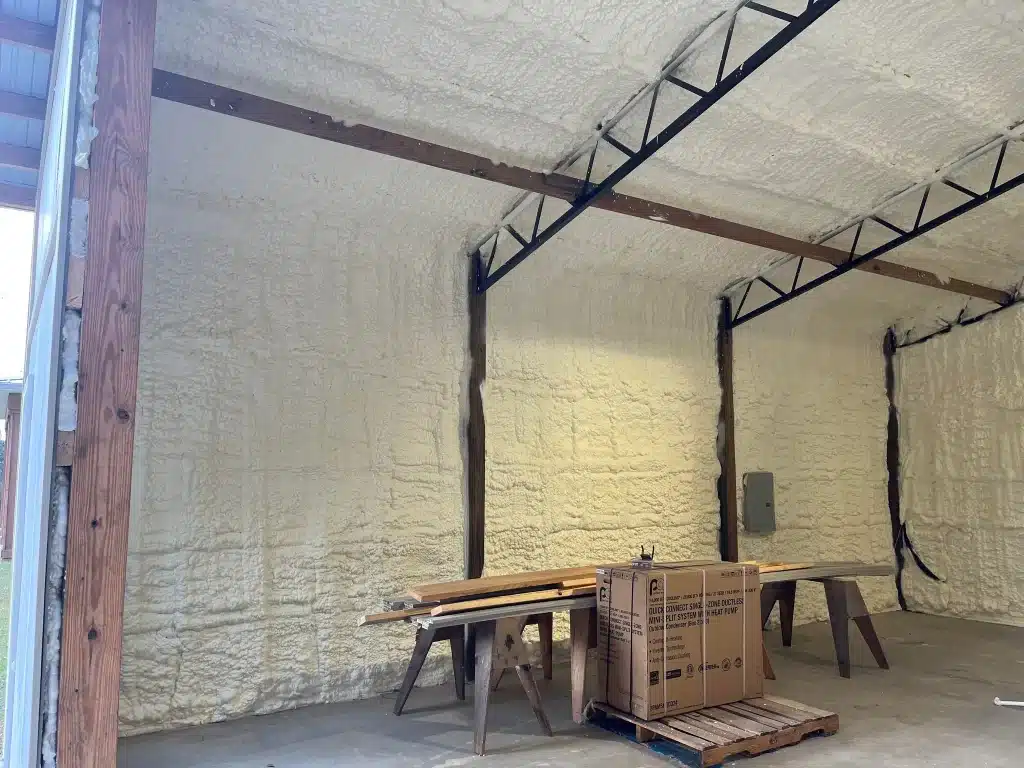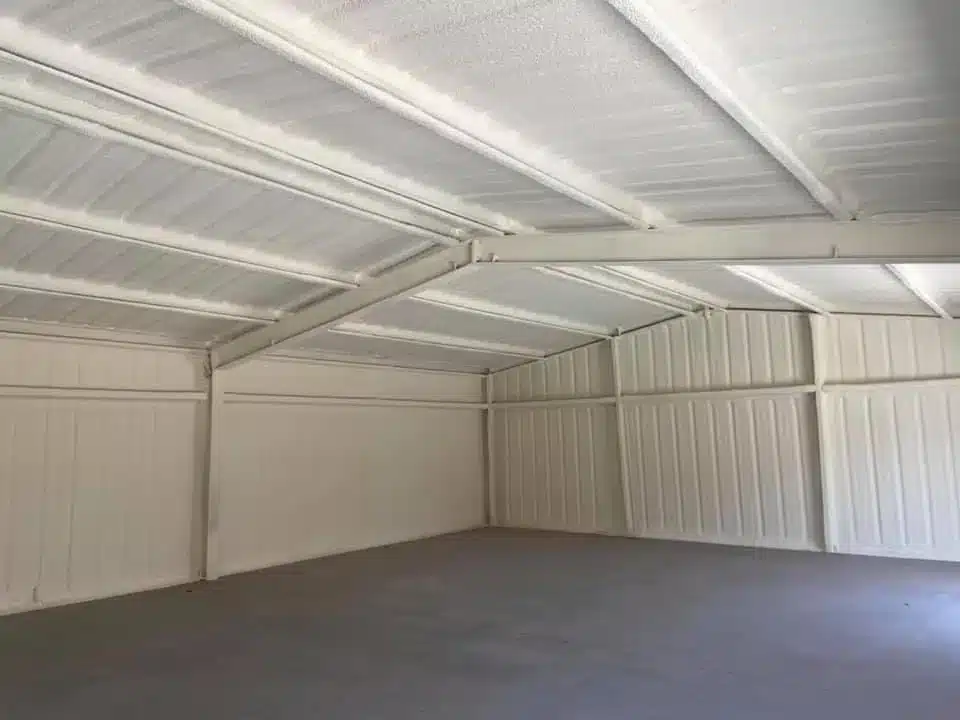A proper insulation install cuts outside noise by absorbing sound waves and blocking their path into living spaces. Materials like fiberglass or foam boards trap vibrations from traffic, neighbors, or machinery, which reduces the decibel levels heard indoors. Installers seal gaps around windows, doors, and walls to stop sound leaks, creating a quieter environment. Studies show that well-placed insulation can lower indoor noise by 20 to 50 percent, depending on the material and setup.
This approach works because sound travels as waves through air and structures. Insulation disrupts that travel, turning chaotic urban sounds into background hums. Homeowners often notice better sleep and focus after such upgrades. Information here draws from hands-on projects in various climates, including Florida’s humid conditions, where moisture-resistant options prevent issues while tackling noise.
What Causes Outside Noise Pollution
Outside noise comes from cars on busy roads, airplanes overhead, construction sites, and even barking dogs next door. These sounds add up, creating stress and health problems like hearing loss or high blood pressure. A report from the Environmental Protection Agency (EPA) estimates that traffic noise alone affects over 100 million people in the U.S. each year, pushing average exposure levels above safe limits.
Noise pollution varies by location, affecting different areas uniquely. In urban areas, noise levels often hit 70 decibels during the day, double what experts recommend for comfort. Rural spots face less, but growing suburbs bring more highway sounds. Florida homes near coastal routes deal with extra echoes from water and wind. Understanding these sources helps target insulation where it counts most.
[Image: Diagram showing common sources of outside noise like traffic and construction near a home]
Mechanisms of Noise Reduction with Insulation
Best Insulation reduces noise through absorption and decoupling. Dense materials soak up sound energy, so waves lose power before reaching inside. For example, adding batts in walls stops vibrations from traveling through wood frames. Proper installs also include mass-loaded vinyl layers that add weight, making it harder for low-frequency rumbles like truck engines to pass through. It’s also wise to check for air leaks first, as they let sound in more than thin walls do.
Sound transmission class (STC) ratings measure this effectiveness. Higher numbers mean better blocking, with 50 or above ideal for homes. In practice, combining insulation with door sweeps cuts noise from street traffic by noticeable amounts.
Insulation Types for Sound Control
Different materials handle noise in unique ways. Fiberglass batts work well for attics and walls, absorbing high-pitched sounds from sirens. Spray foam seals tight, great for irregular spaces, and blocks low rumbles. Mineral wool stands out for its density, often used in floors to dampen footsteps from above.
Here’s a comparison table of common types based on typical performance:
| Insulation Type | STC Rating Range | Best For | Cost per Sq Ft (Approx.) |
|---|---|---|---|
| Fiberglass Batts | 38-45 | Walls and attics | $0.50-$1.00 |
| Spray Foam | 45-55 | Sealing gaps | $1.50-$3.00 |
| Mineral Wool | 45-52 | Floors and ceilings | $1.00-$2.00 |
| Cellulose | 40-48 | Blown-in applications | $0.80-$1.50 |
Data comes from industry tests, showing spray foam edges out others in tight seals. Choose based on your home’s structure. For example, in humid regions like the Florida Panhandle, mineral wool resists mold better than standard fiberglass.
You can also layer materials, like batts with a foam board, to boost overall STC without major rebuilds. This combo has quieted homes near airports in real installs.

Installation Best Practices
Start by assessing your home’s weak spots. Inspect walls, roofs, and floors for drafts, as sound follows air paths. Cut insulation to fit snugly, avoiding compressions that lower performance. Pros use tools like blowers for even coverage in attics, ensuring no bare spots.
Seal edges with acoustic caulk to plug tiny holes. For exterior walls, add resilient channels to separate drywall from studs, which breaks vibration paths. These steps matter in variable climates; Florida’s storms amplify noise through loose fittings, so reinforce those areas.
Avoid common errors, such as skipping ventilation, which leads to trapped moisture, or ignoring HVAC ducts that carry sounds. Proper jobs take measurements twice, focusing on high-traffic noise directions.
Additional Benefits of Insulation
Beyond quiet, insulation saves energy by keeping heat out in summer. A study from the Department of Energy (DOE) notes that homes with full wall insulation cut cooling costs by 15 percent in warm states. Noise control pairs with this, improving overall comfort.
This energy savings helps explain the rising demand. Market data shows U.S. residential insulation installs grew 5 percent yearly from 2018-2022, driven by noise complaints in denser neighborhoods, per Statista reports. Another fact: Cities like Miami report 20 percent more noise-related calls to health services than rural areas.
Test noise levels before and after with a simple app on your phone. Many see drops of 10-15 decibels, making daily life calmer.
Things to Consider Before Making a Decision
Evaluate your home’s age and build. Older houses with single-pane windows need more help than new ones. Budget plays a role; basic batt installs cost less than custom spray jobs, but returns last decades.
Local building codes vary. In Florida, hurricane zones require wind-resistant materials that also handle sound. Think about noise sources: Highway proximity demands wall focus, while airport paths suit roof work. Get professional assessments to match solutions to needs. Long-term, consider resale value; quiet homes sell faster in noisy markets.
Common Questions
How much does noise drop with insulation?
Expect 10-30 decibels less indoors, based on setup and material thickness. Thicker layers handle bass sounds better.
Does insulation affect indoor air quality?
Quality installs use low-VOC materials, keeping air clean. Avoid cheap options that off-gas.
Can renters add insulation?
Temporary fixes like door seals work, but permanent changes need landlord okay.
Key Takeaways
Proper insulation installs absorb and block outside noise, leading to quieter homes and less stress. Focus on material choice, tight seals, and targeted areas for maximum effect. Consider local climate and noise sources to pick the right approach. Evaluate your setup against these points, weigh costs against daily benefits, and plan for long-term comfort in your specific living situation.
Improve Home Comfort Today
For tailored advice on noise reduction, contact Prestige Insulation Solutions at (850) 429-4969 or [email protected]. Experts review options suited to Florida homes, ensuring effective setups. Schedule a no-obligation assessment to start creating peace indoors. This step addresses unique needs without guesswork. (72 words)
Sources
- Environmental Protection Agency (EPA) – Federal report detailing noise pollution impacts and exposure statistics in the U.S.
- Department of Energy (DOE) – Government guide on insulation benefits, including energy savings and installation tips.
- Statista – Market research platform providing data on U.S. insulation industry growth and trends.
Answers to Top Questions
Does Insulation Work on All Types of Noise?
Insulation excels at airborne sounds like traffic but less on impact noises like footsteps. Combine with rugs or underlay for full coverage. Real-world tests show 25 percent overall reduction when paired right.
How Long Does an Insulation Install Last?
Most materials endure 20-50 years with proper care. In humid areas, inspect yearly for settling or moisture. Upkeep extends life without full replacements.
Is Professional Help Necessary?
DIY suits simple attics, but walls demand pros for safety and evenness. Errors waste money; experts ensure codes met and warranties apply.
What About Windows and Doors?
Insulation alone won’t fix those. Add weatherstripping or double glazing for 50 percent noise cut. Focus on full envelope for best results.
Can Insulation Help in Apartments?
Yes, target shared walls and floors. Blown-in options fit without major demo, cutting neighbor sounds by 15-20 decibels.



